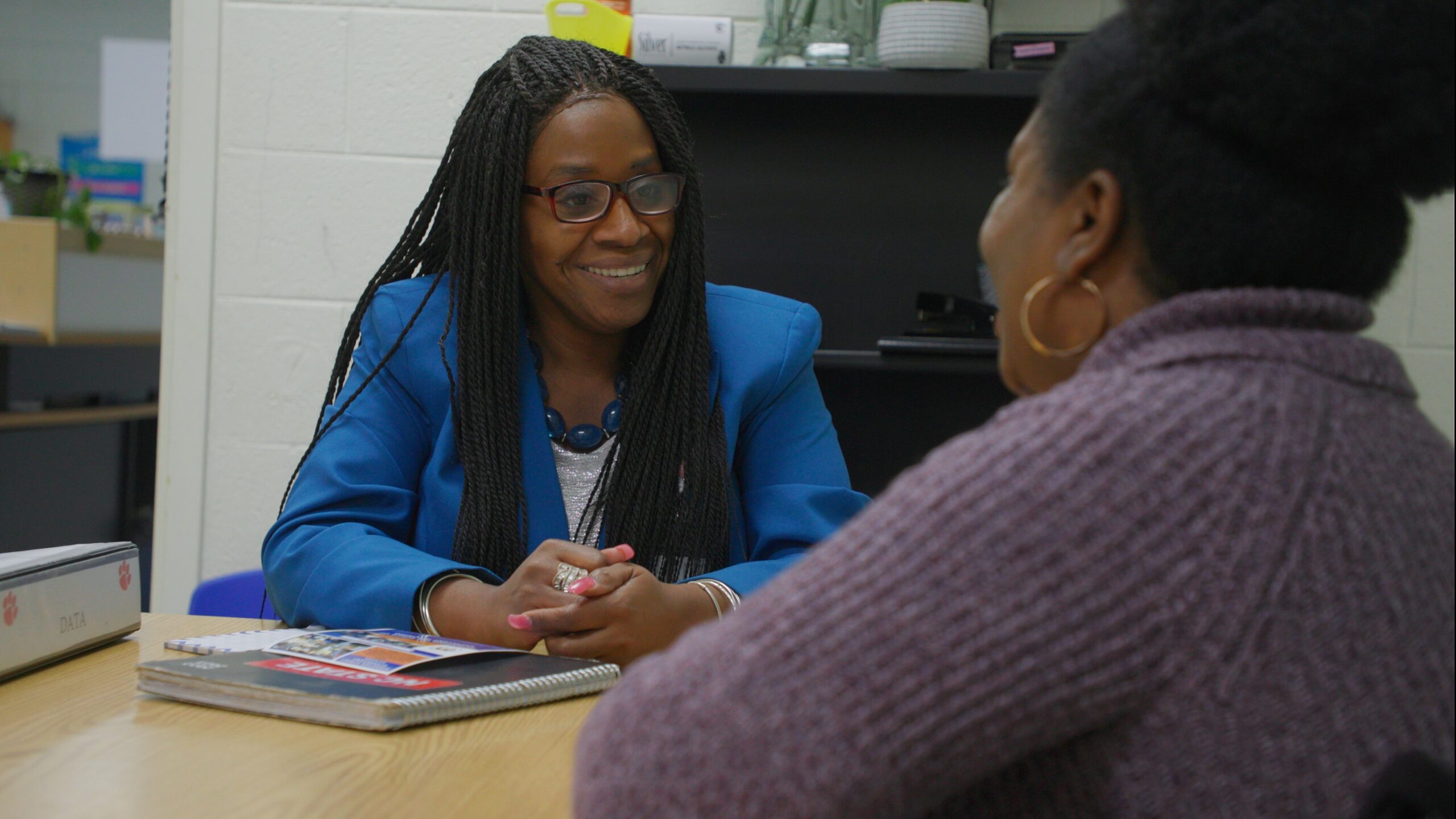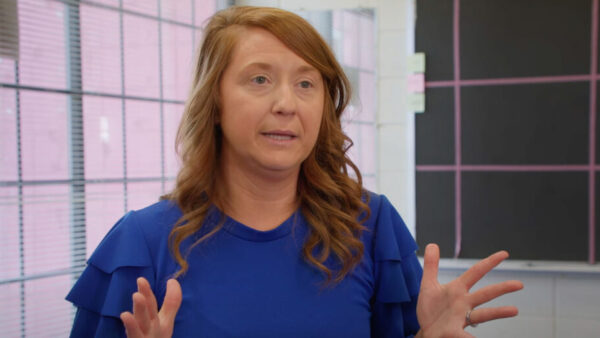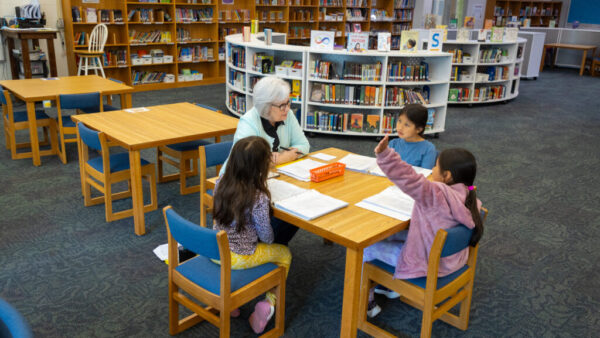PROOF POINTS: New federal survey estimates one out of 10 public school students gets high-dosage tutoring

Pandemic recovery strategies at 1,000 schools raise concerns over how quickly students will catch up
By Jill Barsay, The Hechinger Report
This story was produced by The Hechinger Report, a nonprofit, nonpartisan news outlet focused on education.
Throughout 2022, the Biden Administration urged schools to spend their $122 billion in federal recovery funds on tutoring to help students catch up from pandemic learning losses. Education Secretary Miguel Cardona said students who had fallen behind should receive at least 90 minutes of tutoring a week. Last summer, the White House put even more muscle behind the rhetoric and launched a “National Partnership for Student Success” with the goal of providing students with 250,000 more tutors over three years.
This federal tutoring campaign is based on some of the best evidence that education researchers have ever found for helping students who are behind grade level. What researchers have in mind, however, is not what many people might imagine. Studies have found that sessions once or twice a week haven’t boosted achievement much, nor has frequent after-school homework help. Instead, tutoring produces outsized gains in reading and math – making up for five months of learning in a year by one estimate – when it takes place daily, using paid, well-trained tutors who are following a good curriculum or lesson plans that are linked to what the student is learning in class. Effective tutoring sessions are scheduled during the school day, when attendance is mandatory, not after school.
Think of it as the difference between outpatient visits and intensive care at a hospital. So called “high-dosage tutoring” is more like the latter. It’s expensive to hire and train tutors and this type of tutoring can cost schools $4,000 or more per student annually. (Surprisingly, the tutoring doesn’t have to be one-to-one; researchers have found that well-designed tutoring programs can be very effective when tutors work with pairs of students or in very small groups of three.)
Throughout 2022, the Biden Administration urged schools to spend their $122 billion in federal recovery funds on tutoring to help students catch up from pandemic learning losses. Education Secretary Miguel Cardona said students who had fallen behind should receive at least 90 minutes of tutoring a week. Last summer, the White House put even more muscle behind the rhetoric and launched a “National Partnership for Student Success” with the goal of providing students with 250,000 more tutors over three years.
This federal tutoring campaign is based on some of the best evidence that education researchers have ever found for helping students who are behind grade level. What researchers have in mind, however, is not what many people might imagine. Studies have found that sessions once or twice a week haven’t boosted achievement much, nor has frequent after-school homework help. Instead, tutoring produces outsized gains in reading and math – making up for five months of learning in a year by one estimate – when it takes place daily, using paid, well-trained tutors who are following a good curriculum or lesson plans that are linked to what the student is learning in class. Effective tutoring sessions are scheduled during the school day, when attendance is mandatory, not after school.
Think of it as the difference between outpatient visits and intensive care at a hospital. So called “high-dosage tutoring” is more like the latter. It’s expensive to hire and train tutors and this type of tutoring can cost schools $4,000 or more per student annually. (Surprisingly, the tutoring doesn’t have to be one-to-one; researchers have found that well-designed tutoring programs can be very effective when tutors work with pairs of students or in very small groups of three.)
But little is known about how many schools have actually taken up the tutoring cause. And among those who have, it’s unclear exactly what kinds of tutoring programs they have launched and which students are being tutored. The Department of Education provided some answers last week with the release of a national survey conducted in December 2022 of 1,000 schools, from elementary to high school. This School Pulse Panel is far from an ideal survey; the slightly more than 1,000 respondents represent fewer than half of the 2,400 schools that federal authorities surveyed, and some of the responses are inconsistent and confusing. But it’s the best snapshot of the recovery that we have so far.
More than four out of five schools said they were offering at least one version of tutoring this 2022-23 school year, ranging from traditional after-school homework help to intensive tutoring. But the modes varied: 37 percent said they were giving students high-dosage tutoring; 59 percent said they were administering standard tutoring; 22 percent said they were offering self–paced tutoring, and 5 percent said they were doing other types of tutoring. The numbers exceed 100 percent because some schools are offering several types of tutoring at the same time, administering different kinds to different students in different subjects. (For more details on how each mode of tutoring was defined, here is that question in the survey.)
Tutoring is an expensive catch-up strategy and not every student in each school gets it. Even among the 37 percent of schools that said they were delivering high-dosage tutoring, only 30 percent of their students were receiving it. This translates into an estimate of 10 percent of public school students nationwide who are receiving high-dosage tutoring. Most schools said they were relying on diagnostic assessments and teacher referrals to determine which students were the most behind and should be assigned high-dosage tutoring, but some were also giving it to children whose parents had requested it.
Greater numbers of students nationwide were estimated to be receiving standard tutoring (14 percent) and self-paced tutoring (19 percent), both of which are much less costly to implement, but do not have as strong an evidence base.
It remains unclear how much of the tutoring takes place in person and how much is delivered online. Self-paced tutoring is conducted through online software that mixes instruction with practice questions. But both standard and high-dosage tutoring can be done in-person or virtually. And both can be conducted during the school day or after school.
Many schools have purchased unlimited online tutoring from for-profit companies, such as Paper, Tutor.com and Varsity Tutors, where students can login anytime for homework help. Companies have marketed this voluntary 24/7 tutoring as high-dosage because, in theory, students could use it frequently. Rachel Hansen, a statistician at the National Center for Education Statistics who oversees the survey, said it’s possible that some schools believed their unlimited online tutoring services were a version of high-dosage tutoring and checked that box on the survey, even though it does not meet the Department of Education’s definition of high dosage. I wonder if far fewer than 10 percent of students are actually getting high-quality tutoring three times or more per week.
Another reason to be cautious about this data is that 13 percent of the schools that were offering high-dosage tutoring also said that their students were receiving it only once or twice a week. That is below the survey’s definition of high-dosage tutoring, which is supposed to take place at least three times a week.
The Institute of Education Sciences, the research and data unit inside the Department of Education, launched the School Pulse Panel during the pandemic to track how teaching and learning is changing. Each month, the survey focuses on a different topic, from remote instruction and quarantines to learning lags. This December survey focused on tutoring and it is the final survey for this group of 2,400 schools during the 2022-23 school year. The department plans to begin surveying a new cohort of schools in the fall of 2023.
One thing from the current survey that’s clear is that principals believe half of the students in their schools – 49 percent – were behind grade level, far higher than before the pandemic, when 36 percent were behind. Even if effective tutoring really is reaching 10 percent of students (which I doubt), it doesn’t come close to reaching all students who need help.



